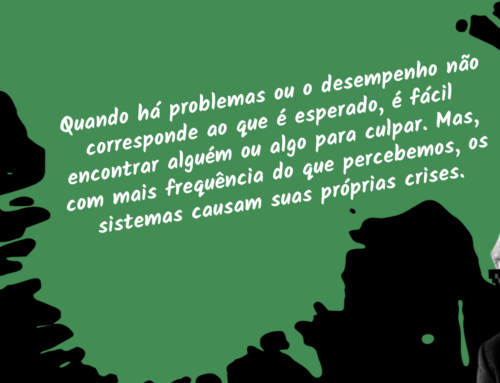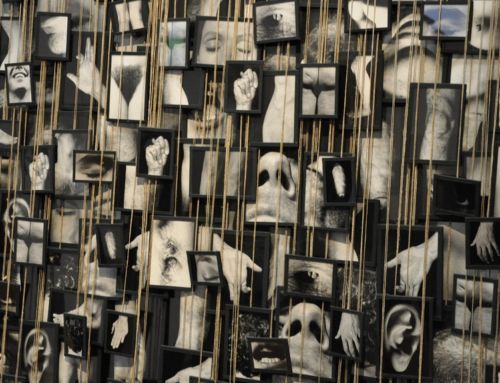Do you ever feel like an ET trying to talk with humans about organizational culture? Well, that was how I felt one day… On one of my first visits as a Target Teal consultant, I found myself sitting in a conference room with thick glass walls, facing a confident and haughty HR director. He had called me in for an initial meeting, to discuss the state of his company’s organizational culture and provide a briefing for a potential consultancy gig.
“We have already diagnosed our culture,” he began, firmly putting a bulky report on the glass table. “We have identified five core values that will define our future as an organization. The next step, of course, is to devise an action plan and train everyone – especially leaders – to live and breathe these values.” The values in question, as I discovered when leafing through the report, were those so common in the corporate world: integrity, commitment, excellence, teamwork, and innovation.
For a moment, I kept silent, looking at the report in my hands, and then at the director in front of me. With a smirk, I made a somewhat of a sarcastic remark: “Very cool. Do you really believe that a set of values and an extensive training program are going to transform your culture? That, suddenly, people will start working differently, relating more authentically, and feeling more involved and productive?”
They didn’t hire me after that meeting. But that’s okay. Today I know that our approach to organizational culture transcends conventional boundaries, and I need to be careful if I want to close any deals. Confronting the simplicity with which people deal with the topic of culture and revealing the absurd reductionism needs to be done at the right time and in the right way. But here, I’m going to put politeness aside and give it to you straight, as they say.
Comparing starting points
In the world of organizational transformation, starting points are generally well-defined. Culture diagnosis, SWOT analysis, climate surveys, and similar tools are used to give an overview of the organization’s current state. These approaches have their use, but they often tend to underestimate the complexity of organizational culture and ignore the diversity of human experiences that coexist within it.
Another common path is to use some typology, analogous to a personality test. Again, the idea is to take something multifaceted and complex and put it in a box that will generate beautiful, super objective visualizations, full of indicators with cold data. I find it funny that it works very much like a newspaper horoscope, if the CEO doesn’t like the “assessment” he ignores it and throws it in the desk drawer, or if he likes it, he goes around telling everyone that this document reflects the culture faithfully and will serve as a basis for the next step.
In the example, mentioned in the introduction, the HR director after the diagnosis was drawn up, drew the pillars or the five values. But what are values in an organization? In many cases, they are simply words that adorn the walls of offices, without having a relation to what is lived on a daily basis. How can we define a culture in just a few words when there are different interpretations of the meaning and application of the five words and various ways of living the culture within the same organization?
At Target Teal, our approach is different. We believe that to start understanding a culture of an organization, it’s necessary to immerse ourselves in its tensions and contradictions. We have to listen to the diverse voices that exist within it and collect the stories that are told. These stories offer “warm data“, something extremely valuable for our work that cannot be summarized or condensed into types, pillars, and values. When we decide to group these stories into themes, we always leave it open for them to emerge and we never ignore or throw away the stories in their rawest and most detailed format. It’s the least we can do if we want to honor the complexity of the topic of culture and deal with it creatively and flexibly.
If we want to promote a transformation, we should start where the change is most needed and most felt: in the narratives that tell stories about what people would like to be different. These stories, which we call creative tensions, function as vectors, pointing to potential small changes, not all in the same direction.
Can we teach culture?
In the field of cultural transformation, many companies after diagnosis follow a well-defined script: identify values (or pillars, to sound more modern), and create an implementation plan. Typically, this plan involves an internal communication plan and a series of training sessions to align everyone in the organization with these values. Often, descriptions of desirable behaviors are also developed. There are two premises behind this approach, both quite questionable.
- Cultural change is a linear and controlled process that can be planned and executed top-down.
- Cultural change happens when we end the information deficit, i.e., before people didn’t know they needed to work as a team and have integrity, now they will be communicated and trained for this.
I suspect that one of the reasons this path is still considered viable is that it is comfortable. It does not deal with contradictions, it does not deal with tensions, and it does not deal with privileges. At most, it’s just the good old placebo. Sometimes the result is disastrous, most of the time it’s innocuous, and on rare occasions, it seems to have an effect.
Instead of creating a fixed plan, we prefer to work experimentally, with short cycles that allow us to adapt the path as we go along. Based on tensions, we encourage everyone to propose experiments that affect the way people work and interact. We prototype changes in cultural artifacts – rituals, processes, tools, policies, etc – that are used daily and that inhibit or stimulate behaviors and interactions. Examples of interventions include:
- Adopting a new format for regular meetings and rituals
- Defining decision-making processes
- Changing the way agreements on expectations and authority are described
- Explicitly structuring roles and teams
- Creating tools and communication protocols
We believe that structure and culture are two sides of the same coin; it’s impossible to work with one without affecting the other in both directions.
This approach requires courage and a willingness to face discomfort, as each experiment is a step into uncharted territory. However, it is an approach that recognizes and respects the complexity of organizational culture and allows for more authentic and lasting transformation.
The myth of culture
Another common pitfall in working with organizational culture is the phenomenon I like to call the “ghost culture.” This happens when people start treating culture as if it were separate from the organization, on some parallel plane or dimension. They talk about culture as if it were a mysterious and intangible entity that can sabotage any attempt at change.
I have heard many managers say things like: “We tried to change our organization, but the culture did not allow it” or “the culture needs to be changed first before we can focus on anything else.” As if culture were a separate entity that needs to be conquered or appeased before any change can occur.
But by doing this, we ignore an important reality: culture emerges and changes from the daily interactions and practices that occur within an organization. It does not determine or precede anything, it just emerges from the interactions between individuals and the system’s structure.
Instead of treating culture as an obstacle that needs to be overcome, we at Target Teal see culture as something that is in constant flux and serves as raw material for our work. Through continuous experimentation, we seek to directly affect these interactions and daily practices, and thus, influence the way culture is perceived, experienced, and manifested.
By adopting this view, we cease to be hostages of the “culture”, we also do not become its omnipotent creators, we are active participants in a social system and understand “culture” as a way to describe this experience we are living and that we can do something about. This is not easy and at times we encounter situations where our approach is considered too risky or unorthodox. But we believe this is the best path for cultural transformations in organizations. And what about you, do you still believe in diagnoses, plans, and training?






Leave A Comment